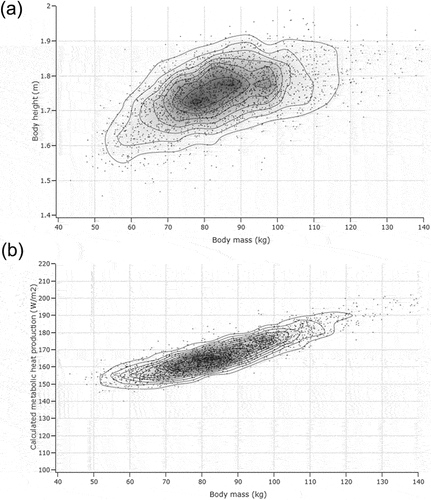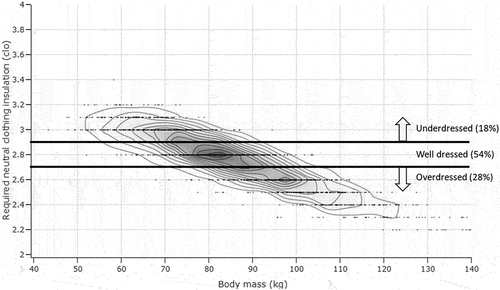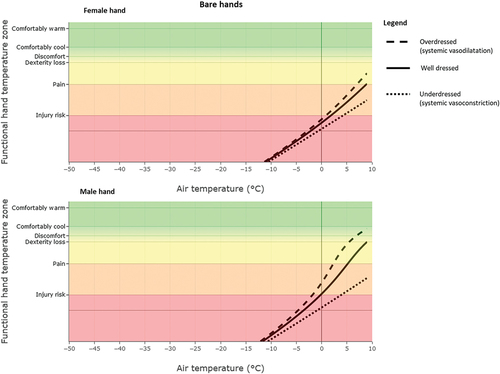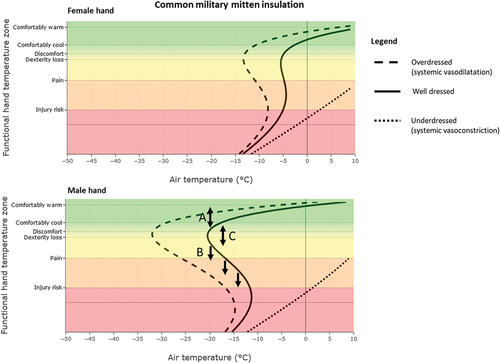Figures & data
Figure 1. A) set of soldiers (n=2189) with varying body size (height and weight) for which the required clothing insulation analyses have been performed. B) calculated metabolic rate of the set of soldiers for a 4km/h walking activity on a small slope (2%) road, carrying a 20kg load.

Figure 2. Calculated required clothing insulation for a varying set of body sizes. Relative to the average required clothing level (2.8±0.1 clo) 18% is underdressed, 28% is overdressed and 54% is well-dressed. The calculations have been performed using the metabolic rates shown in .

Figure 3. Bare hands functional hand temperature zones vs air temperature for three levels of dress state (1 km/h wind). Top: a female hand. Bottom: a male hand. The lines indicate heat balance and hand temperature will not change. Points on the right side of a line coincide with positive heat balance and hands will warm up. Points on the left side of a line coincide with negative heat balance and the hands will cool down.

Figure 4. Common mitten hands functional hand temperature zones vs air temperature for three levels of dress state (5 km/h wind). Top: a female hand. Bottom: male hand. The line indicates heat balance and hand temperature will not change. Points on the right side of a line coincide with positive heat balance and hands will warm up. Points on the left side of a line coincide with negative heat balance and the hands will cool down. The letters in the bottom panel are supportive of three thought experiments: (A) starting from the solid line, if the hand accidentally warms up, it will cool down again until settling on the solid line. (B) If the hand accidentally cools down and ends on the left side of the solid line, it will continue to cool down. (C) In case the hand temperature drops from the solid line and ends up at the right side of the solid line, the hands will be in positive heat balance and automatically warm up again.

Table A1. Estimated properties of baseline gross blood flow to hand and local metabolic rate of the hand.
Table A2. Estimated fraction of remaining blood flow to the hands due to centrally mediated neurophysiological mechanisms () and locally mediated mechanisms (
) per functional hand skin temperature class.
Table A3. Estimated arterial blood temperature and estimated heat transport to the hands for functional hand skin temperature for the well-dressed situation.
